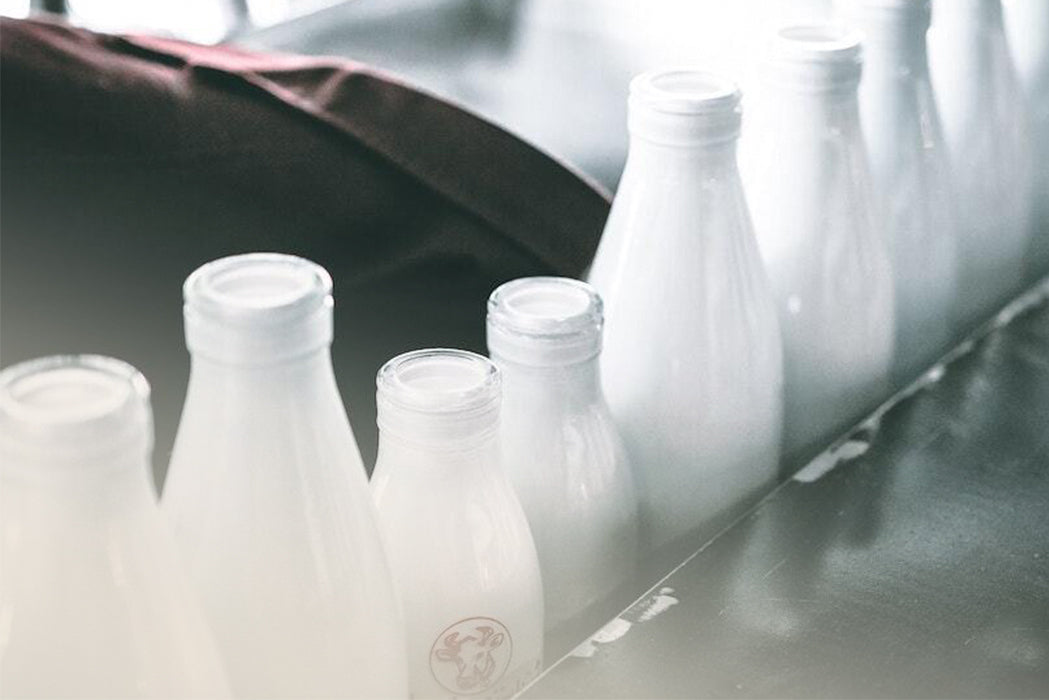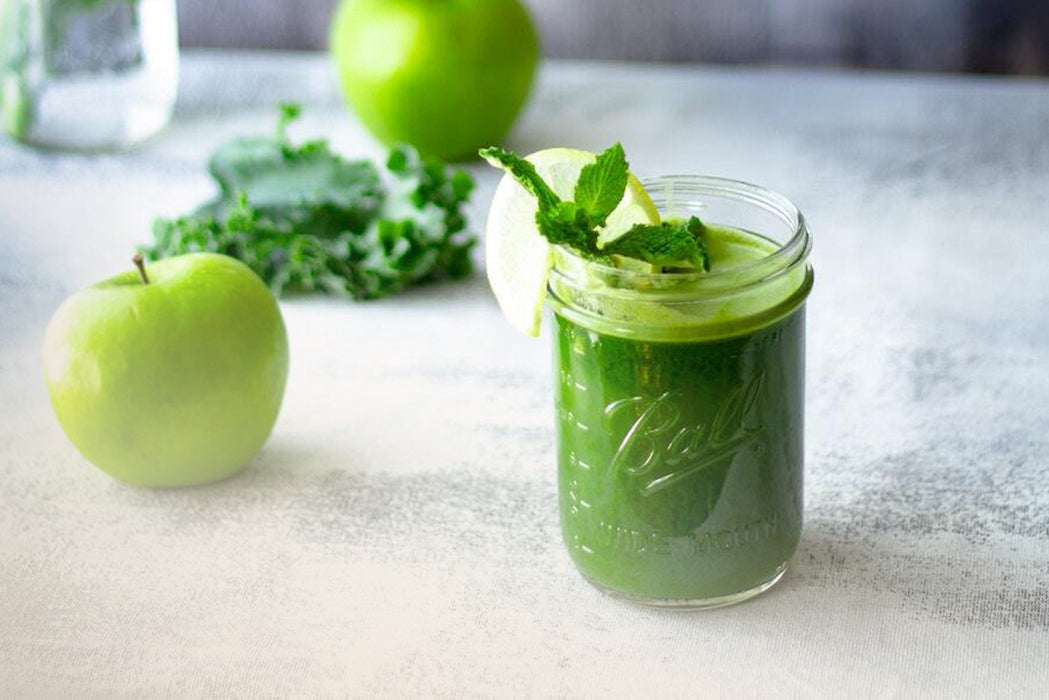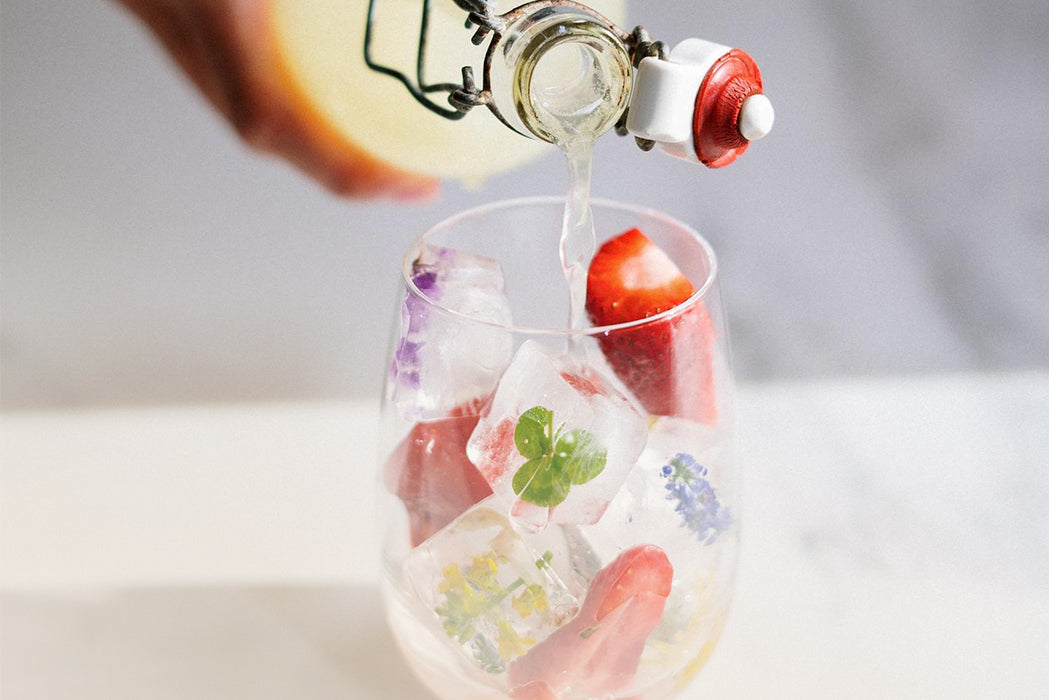Fermentation is that easy without an overpriced starter kit!
There are a few suppliers online who sell kombucha fermentation kits and kombucha starter sets for expensive money. However, you don’t need much for Kombucha fermentation at home. It's that easy to grow a kombucha mushroom from our raw Raw Original!
You need these utensils to breed your own Scoby:
- 1 large glass jar with a wide opening – rinse well without washing-up liquid!
- Tea – Black Tea (unflavoured/artificial additives)
- Organic raw cane sugar
- Water – preferably filtered
- unpasteurized kombucha (e.g. Kombucha Original )
- 1 air-permeable clean cloth
- 1 elastic band
- 1 room with a temperature between 20 and 30 degrees

Here's how to grow your Scoby from a Raw Original Kombucha:
- Boil tea with cane sugar for 8 to 10 minutes (8 g tea per liter / 60 g organic cane sugar per liter).
- Put the tea and sugar mixture in the glass jar and let it cool down for a while.
- Cover the glass with the cloth and fasten with a rubber band!
- The sugar should now be completely dissolved.
- Now the unpasteurized Kombucha can be added in a ratio of 1 to 10.
- Then fasten the cloth securely to the vessel and place the glass in a safe place.
- Depending on the conditions, it can take 7 to 21 days for the kombucha fungus to form all by itself.

In the following we will explain how to properly prepare your first kombucha without a starter kit. Happy fermenting!
Before you can brew your kombucha you need (per liter):
- 1 glass container with a volume of at least 1.5 liters and a large opening (rinse well without washing-up liquid).
- 8 g black tea or green tea
- 100 grams of sugar
- 1 liter water (preferably filtered)
- starter liquid or finished very acidic raw kombucha with a neutral taste as a starter liquid .
- 1 breathable cloth

Brew your first kombucha yourself – Let's go!
- First, bring 1 liter of water to a boil in a large pot . Then add 8 g of black tea and let it steep for 12 to 15 minutes (while the water is gently simmering).
- Then drain the tea and then add 100 g of sugar . The sugar must be stirred until it has completely dissolved in the tea .
- It is very important now that you let the tea with added sugar cool down in a glass vessel to at least 25 degrees room temperature. The sensitive Scoby must never be immersed in hot water. The living bacteria and yeasts, as well as proteins can be destroyed in this way.
- Now add 100 ml of the starter liquid to the tea mixture.
- Then you carefully add the previously carefully rinsed Scoby to the container .
- You can now cover the opening of the glass jar with the cloth and fasten it with a rubber band.

Now the Scoby has about a week to process the ingredients of the tea, so to speak "eat up". If it is at the bottom of the container, the Scoby will be slightly larger and usually form more Scoby "offshoots". Often the scoby will float and over time a thicker kombucha mushroom will form at the top of the jar.
- Once the kombucha mushroom has reached the right degree of fermentation after about 7 days (depending on your preferences and taste, we recommend a pH value between 2.9 and 3.1) you can carefully remove the scoby from the kombucha liquid and Remove tea residues with lukewarm water.
- You can store the Scoby in some bottled kombucha liquid (new starter liquid) for the next fermentation.
- Before you can bottle the kombucha, we recommend filtering the liquid through a very fine sieve or alternatively through a layer of kitchen roll. However, this is not a prerequisite for enjoying it.
- The kombucha should then be left to ferment for about 2 days in a closed bottle at room temperature. Here, the natural carbonic acid can form.
Now you've done it and brewed your first own kombucha, without a starter kit. You can find more articles and recipes on secondary fermentation on our KOMBUCHERY blog.















Teilen:
2 comments
Hallo Naftalia,
wenn du unserem Original Kombucha Zucker hinzugibst und ihn eine Weile abgedeckt in einem Glas an einem warmen Ort stehen lässt, wird sich ein SCOBY bilden. Liebe Grüße!
Hallo ich mochte frage ob ich mit ihre kombucha raw in der flaschen auch ein kombucha scooby machen konnen?
Danke
Lg